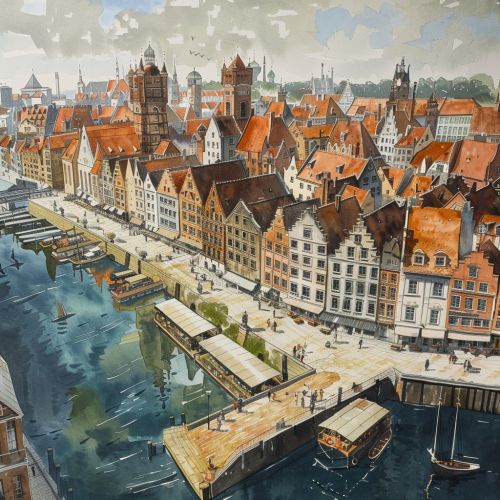Royal Prussia
History
Royal Prussia (also known as Polish Prussia) was a region in the Kingdom of Poland from 1466 to 1772. Its capital was Gdańsk. The region was first established as a result of the Second Peace of Thorn treaty, which ended the Thirteen Years' War between the Kingdom of Poland and the Teutonic Knights.


Geography
Royal Prussia was located in the northern part of modern-day Poland, bordering the Baltic Sea. It was surrounded by the Duchy of Prussia to the east, the Kingdom of Poland to the south and west, and the Baltic Sea to the north. The region included the cities of Gdańsk, Elbląg, and Toruń, among others.
Governance
As part of the Kingdom of Poland, Royal Prussia was governed by a local parliament, or sejmik, which was responsible for local administration, judiciary, and taxation. The sejmik was composed of local nobility and was presided over by a governor, or voivode, appointed by the King of Poland.
Economy
The economy of Royal Prussia was largely based on agriculture, fishing, and trade. The region's location along the Baltic Sea made it a major hub for trade, particularly in grain, timber, and salt. The city of Gdańsk, in particular, was one of the most important trading cities in Northern Europe during this period.
Culture
The culture of Royal Prussia was a blend of Polish, German, and Baltic influences. The region was predominantly Catholic, but there was also a significant Protestant minority. The local nobility was largely Polish, but the cities were predominantly German-speaking.
End of Royal Prussia
Royal Prussia ceased to exist as a separate entity in 1772, when it was annexed by the Kingdom of Prussia during the First Partition of Poland. The region was subsequently incorporated into the Province of West Prussia.
